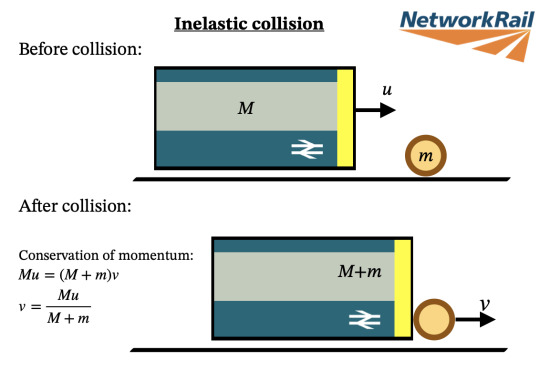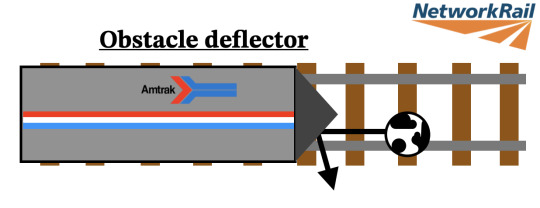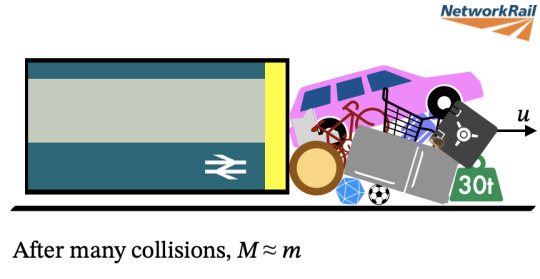#fast calculation
Explore tagged Tumblr posts
Text
Abacus Tutorials | Lesson - Addition and Subtraction on Abacus Tool | Abacus Online Classes
youtube
This is the 2nd Abacus tutorial in the series, Here you will learn how to do simple addition and Subtraction on Abacus Tool.For learning to do Addition on Abacus you need to join Abacus Classes.
Get a brief understanding about Abacus Addition and Subtraction in this video. To become an expert at using Abacus for Addition and subtraction join Mastermind Abacus online classes or offline classes. Learning Abacus improves a child's Mental Math. Abacus training triggers Whole Brain development. You can also start Abacus Classes in both Offline & Online mode.
#mastermind abacus#mental math#fast calculation#mastermind online classes#abacus for kids#kidslearning#abacus courses#mastermind abacus classes#Youtube
1 note
·
View note
Text
Mel Medarda is one of THE characters of Arcane and I'm tired of pretending she isn't.
who ever designed her, decided what her story will be and just simply who she is gonna be, will see heaven I'm so serious
#mel medarda#mel arcane#arcane#arcane season 2#I love her actually#she is SO interesting and season 2 made it so much better#the flashback in season 1 already gave us so much#she is so cunning fast and calculating#everything about her makes me want to know more
337 notes
·
View notes
Text

Another Christmas, another night where Sherlock fails to stay up and see Santa.
Maybe next year.
#sherlock#bbc sherlock#sherlock holmes#barachiki brand new#also#whose house is this?#sherlock did the calculations to figure that Santa would stop here next#but he fell fast asleep before he could catch Santa#he had to sneak out just as the children ran down the stairs#barachiki christmas queue
109 notes
·
View notes
Text

LOOK AT THEM READING TOGETHER,,,i can hear them bickering already. jj constantly telling reid she wasnt done and him bitching before turning the page back. the reason theyre making the faces they are is because reid has read this page five times already and jj has told him a thousand times to wait until she says she's done before turning the page but he doesn't LISTEN!!!
#they are siblings your honour#genuinely though why would u ever read something with dr spencer reid#thats a terrible idea#he reads so fast neither of you will be happy. terrible terrible idea#ive always thought that reid reads at a slower pace when its for leisure#and that the 20000 words a minute was maybe assessed digitally?#i dont know much about how reading speeds are calculated but i imagine it takes longer when he has to flip pages#and when ive tested my reading speed it was always “how fast can these words flash by on a screen before you can no longer comprehend them”#but i dont know what official tests are like#SORRY that got away from me. anyway point is yes ive always headcanoned that reid reads slower when its for leisure#but probably still absurdly fast and would be very annoying if you tried to read with him#jj#jennifer jareau#spencer reid#jj & reid#jennifer jareau & reid#not fic#criminal minds#criminal minds rewatch#criminal minds s02e21#open season#criminal minds 2x21
81 notes
·
View notes
Text

Heyo, I wanted to let you all know that I have a Ko-fi page where I offer commissions for those that have been wondering about wether I take them or not :D
In this case a "sketch" commission is a colored clean sketch and very basic shading, no background.
The exceptions are the Quick Sketch, which is a timed rough monochrome portait sketch, and the Lower Decks style (a fullbody artwork in the STLD style)
Maybe there's something there for you :D !
(delivery times may vary, as I have to watch my wirst pain)
#art#digital art#star trek#star trek lower decks#commissions#commissionsopen#art commissions#sketch commission#ko fi#ko fi commissions#the prices have been calculated properly based on a fair hourly wage#I'm just fast lmao#character art#star trek ocs#ocs#star wars#dnd
63 notes
·
View notes
Text
wolqotd
Your WoL fights a random enemy, a random npc/civilian happens to witness that. How would they describe the encounter?
#someone with no combat skill would mostly see flashes and trails#vivi's movement's fast and calculated#as his echo tells him where to and where not to be (standard mmo telegraph stuff)#it's like a lightning bolt descending from heavens to smite the nearby threat#with otherwoldly precision and finality#and then peace out#leaving the onlookers to pick their jaws from the ground#vivi's aware that people treat him like a phenomenon#but he feels nothing good about it#ffxiv#vivien rell#wolqotd#text post
67 notes
·
View notes
Text
Thinking about the inclusion of Will remembering Dustin's birthday
The inclusion of more birthdays at all. The inclusion of someone's partner remembering to the hour.
#birthdaygate#ugh#stranger things#suzie bingham#duzie#also they're so cute she's counting down#slash can calculate that fast which is also true#but it can be both#she tracks time relative to his birthday#get me a girl like suzie#byler#will byers
28 notes
·
View notes
Text
Me: Happily working on TBoHH
*realizes I am coming up to the point where I have to broach the Marin subjct*
Me:

#the blood of heroes' history#ketto's writing misadventures#how did this sneak up so fast?#i put it off until part two last time!#now it's here already!#*calculates when the chapter will drop with current schedule*#this won't come out until january?#i need to change my update schedule#I can't wait that long to share this!#i'll die!
28 notes
·
View notes
Text
Sent an application for a kitten on Petfinder tonight. I'm irrationally scared they'll reject me for some reason :/ but Selkie needs a buddy and I've been scrolling looking for a little face that calls to me. And she does. So I hope I hope!
#my first fear is that the agencies site says uou have to be within “an hour and a half of the Chicago suburbs”#and I'm just barely outside that depending on where they use to calculate?#and idk if they'll be weird about it for some reason or if i should have just#not applied#secondly although she's a little black thing#she had faint tabby stripes and the listing calls her “smoke”#and I'm a little afraid they'll see on my application that my last cat was a bengal#and be weird and snobby and assume I'm just out looking for fancy colors#yes siren was a bengal but she was also according to my vet close to 9 or 10 years old#the rescue labeled her at 7 probably to help adopt her#since i know older cats don't go fast#and between losing my dad and then my lifelong cat#and having always loved bengals#i felt so much like they helped point me to her#somehow#and her personality was so much like fiddlesticks it was crazy#we just fit#maybe that's still shallow of me idk#but anyway it's a factor#im forever scared of doing things wrong and getting yelled at by people who think i should have known better#or something#so I'm afraid#that's all
7 notes
·
View notes
Text

DANG. Absolutely cold-blooded.
#I’d expect a zinger like that outta reggie any day but dilton?#did not see that coming in a million years#he’s choosing an insult OVER answering a question in class correctly?#what did archie DO to motivate this??#archie comics#dilton doiley#archie andrews#mr. flutesnoot#really though you can’t answer the original question without knowing exactly how many gallons archie’s horrible car can hold#my real question is where dilton got 8.342 from#I was expecting it to equal some natural number like 1 or 2 but when I did the calculations it equaled 2.2072932 gallons#I double checked my work with the internet and recieved 2.2037233 gallons instead#I’m almost certain this is a result of mr. flutesnoot rounding his provided number of gallons by several decimal places#so that I calculated the conversion with one liter equaling 0.264 gallons rather than 0.264172 gallons#of course when I checked it again with my own calculator I got 2.203722824 which is closer to but not quite 2.2037233#because even if you rounded it so that a three would follow the two you’re still left with ‘230’ rather than ‘233’ at that one part#so the more accurate values I found must still be rounded by some amount to cause the discrepancy#at ANY rate: unless I have missed something in my calulations the number 8.342 has no particular significance#this isn’t lightning-fast mental math. dilton just made that number up on the spot#and the specificity only exists to make him sound smarter#(and it kinda worked because I did initially assume there was some meaning behind the number)#the joke might have landed better if he’d have said ‘3.785 liters’ (exactly 1 gallon)#UNLESS the gas prices at the time happened to work out so that 2.2037233 gallons equaled exactly one dollar or someth—
11 notes
·
View notes
Text
What is Abacus Mental Math? Benefits of Abacus Classes
youtube
Get brief information about how abacus training triggers the 'Whole brain Development' in children. Mastermind Abacus training activates both the left and right brain. Attending an abacus class regularly augments in the student's skills like visualization, photographic memory, recall, logical thinking, and overall learning abilities.
#abacus#mastermind abacus classes#abacus for kids#fast calculation#mental math#education#child development#abacus classes#abacus learning platform#Youtube
0 notes
Text
monster boyz thoughts...
#ok so. basically i woke up thinking about teeth & how he would show his love for red#bc 1. he can't talk & so he can't outright say he loves him but also.#2. neither of them really understand love or that what they feel for each other is love yk#so i was thinking. teeth probably always leaves the actual act of killing their prey to red or#at the very least. makes sure red is watching when it dies bc he knows that's like... uh. he knows that's the ''important'' part to red#if that makes sense#also! i think the only reason teeth eats people is bc of red#if he hadn't met red i really don't think he would have survived all that long bc he's not particularly fast (bad leg)#& he's not particularly smart either. so he most likely would've gotten taken out by monster hunters if he was alone#though he is very strong so the hunters wouldn't have been left unscathed#& i think red wouldn't have survived all that long either bc he was never particularly careful about anything until he met teeth#he was doing increasingly risky & dangerous hunts bc he simply didn't care yk. but teeth gave him like. a reason to be careful & calculated#which just further proves they're bound by fate yk.#um. i also had some breakthroughs with teeth's origin story so. i maaaaayyyy work on those today. i might actually make red's finally#we'll see. i might end up drawing all day again. idk. n e way.#rainyrambles
37 notes
·
View notes
Text
Why are obstacles on the tracks a problem?
Previously, I mentioned that when a train encounters an obstacle on the line such as a tree branch, what happens is a complicated physics process that results in the train pushing the branch along the line. Here I will explain that process, but be aware that complicated physics things are about to happen. There are some pretty diagrams to look at though, so if you want you can look at those and then skip to the end for a summary. They're even in color!!
First of all, some basic setup (before putting some numbers in):
We have a train travelling at an initial velocity u, with mass M, and an engine capable of producing a constant power P (we will use this to restore the train's velocity to u if it decreases for some reason).
The train encounters an obstacle on the line, such as a tree branch of mass m. We will assume (for now) that the collision is elastic - that is, no energy was lost (for instance, as sound).
We are also assuming a frictionless vacuum, cylindrical tree branch, and rectangular train.
To start with, we look at conservation of momentum (figure 1):

Since the train has elastically collided with a branch, its speed is reduced, given as Vtrain . As trains are typically much heavier than a single tree branch, we take M >> m, and so Vtrain ≈ u.
However, this is somewhat unrealistic, as when a train hits an obstacle, energy is lost –as a crunch sound, for instance– so it may be more appropriate to assume an inelastic collision. Since I said that the branch sticks to the train (and I am right), we should assume a completely inelastic collision, where as much kinetic energy as possible is lost.
Again, we look at conservation of momentum (figure 2):

In this case, if we again assume M>>m, we still get v ≈ u.
Since we know from reality that problems will happen if the train collides with the branch, this tells us that we have made an unrealistic assumption somewhere. In this case, it must be the assumption that the train's mass, M, is large enough that the branch's mass m can be ignored. So, without this assumption, we look at how long it takes the train to get back to its initial speed, using the equations for motion under constant power (equations derived from Taylor, 1930 and shown in figure 3):

To find how much energy is used in each case, simply multiply the time by the power.
By now, you may be wondering what the point of all this is – after all, I haven't actually shown you if this is meaningful. So let's add some numbers to this and see how reasonable all of our assumptions were!
If we take the train's mass to be M=30 tonnes (30,000kg), its power P=1500kW, and its initial speed u=40 m/s (144 km/hr) respectively; and assume the branch has a mass m=5kg (that seems reasonable, right? Trees are mostly water, which is 1kg per cubic meter, and if it has a radius of 0.5m and a length of 1.435m, it should be about that much), we can calculate all the various things we need:
First, the final velocity of the train and branch in the inelastic case (see figure 2 for the equation):
v≈39.99m/s which is pretty close to the initial velocity.
The time taken to return to speed (fig. 3) for the train/branch system is:
t≈0.0053s
This is quite fast, but hold on: the energy used to do this is about 8000 joules, which is probably quite expensive at current electricity prices, but those are given in kWh and I really don't feel like converting between them. (8000 is a big number, right?)
For the elastic case, things are a little bit more complicated, as we have two different velocities to calculate (figure 4):

If you were just looking at the pictures and are upset that the last two have been equations, don't worry, the next one isn't.
Vbranch ≈ 79.99 m/s
Vtrain ≈ 39.98 m/s
The time taken to return to speed:
t≈0.0094s
This is almost double that of the inelastic case, resulting in the energy used increasing to the enormous –and probably expensive– value of 14 kJ. (I even needed to use an SI prefix this time! And one of the ones that makes things bigger!)
However, both of these cases also reveal some interesting things about the situation: the elastic case has the tree branch launched away from the train at 80m/s, which is about 288 km/hr. Since the train and branch are likely irregularly shaped, the branch probably won't be pushed along the tracks at 290km/hr, and could instead be launched into the air space towards you. Nobody wants to be in the situation where a tree branch is flying towards you at almost 300 km/hr. I could do some math to see how much it would hurt, or if you could reasonably expect to dodge it, but I think we can just assume it will be quite painful.
Historically, trains avoided flinging branches at nearby passengers at almost 500km/hr (that's half the speed of sound) by employing a triangular device on the front of the train to deflect objects such as cows off the tracks. These were particularly common in North America, where lineside fences have yet to be discovered outside of the Northeast Corridor and it is easy for things to wander onto the tracks. However, thanks to innovations by the Budd company and others, more recent american trains are basically indestructible, rendering obstacle deflectors unnecessary. The effects of the obstacle deflector are shown below (figure 5):

This device is known in America as a burgerizer, since it can provide an easy meal for the train crew –two of the five ingredients for a cheeseburger right on the front of the train, more if you're lucky– although since usually the obstacle is shoved off the track, the British name of "cowcatcher" is misleading, especially if you hit a truck instead. The burgerizer's physics can easily be calculated using conservation of momentum, but this involves vectors, and I don't want to deal with vectors right now is left as an excercise for the reader.
In the inelastic case, we note that the branch sticks to the front of the train. Since the inelastic case is more realistic (I will not justify this statement), this means that other things will also stick to the train. By the time the train reaches the end of the line, the mass of the things stuck to it may end up not being negligible (figure 6):

If the train is electric, this will strain the power grid and could lead to power cuts elsewhere as more energy is given to keep the train running at speed. If the train is diesel, it will be unable to provide constant power and could slow down (an electric train has access to every power station in the country if the need arises, a diesel train just has its onboard generator or motor AND a limited amount of fuel).
This mess is also difficult to clean up, and could damage the track as it is pushed along. Also, although we have been ignoring friction (since trains have very little rolling resistance) this pile of stuff will cause friction to be very noticeable, and could even obstruct the driver's visibility – potentially leading to more collisions.
–//–
Now that you have read through all of the calculations (or looked at the pictures and skipped the rest), you should have a thorough understanding of why we have to stop trains to clear things off the line, and can't just plow through them like in the movies. (I assume this happens in movies, I have not checked)
TL;DR: When the train hits a branch, either the branch goes flying towards you really quickly, at basically 1000km/hr, which is approximately the speed of sound; or it sticks to the front of the train and becomes part of a massive pile of things that gets in the way and slows down the train.
Finally:
I put the images together using the shapes in my computer's word processor (except the various rail logos); while the equations of motion under constant power are from this paper by Lloyd W. Taylor (published in 1930, I believe). Also thanks to @cosmos-dot-semicolon for peer reviewing this, any errors are not my fault.
#network rail#physics#trains#network rail essays#I spent way too much time on this you better appreciate it or else#I would not want to get hit by a tree branch moving at roughly mach 2#yes that is a spherical cow in figure 5#please do not leave refrigerators on the railway it is not good for them or the trains#and yes I did get the density of water wrong by a factor of 1000#I want to change it but I think it's funnier if I leave it as it is#a small branch probably is about 5kg though#but if I did use the correct density then the mass of the branch would be 5 tonnes and that very much isn't negligible#in the inelastic case the train's speed is actually reduced to 34m/s and in the elastic case it's reduced to 29m/s which is quite a lot#this also means that the speed of the branch in the elastic case is a thousand times higher at nearly 1.000.000km/hr#which is about 0.09266c so that is quite fast and it's a good thing the collision is inelastic since otherwise it could destroy a city#also I have decided that the train used in these calculations is the BR Class 000
7 notes
·
View notes
Note
Hiii I'm sorry if you've answered this before, I'm just wondering if you have an idea (vague or otherwise) about how many chapters ITF is going to be? I'm just curious. Thank you, hope you have a great day ^^
I have? Maybe? I’m not sure! But after this we’ll have probably 10 chapters left! I’m guessing we’ll end up at 31 total chapters but that’s just my guess! We’re on the home stretch!!
#I’m trying not to overthink it lol#But if my calculations are correct hehe it should be ten??#I’ve got 3 chapters ish before the battle starts (it begins at the end of one chapter) (because lol why not haha)#So we have this one#22#23 then full on battle we’ve got about 4-5 chapters of battle and all the shit that goes down with that! Then a few afterwards#Wrapping up the story lol#wow I can’t believe we’re on the home stretch!#we’ll have to do a countdown haha. But yeah after this chapter I think 10 left haha#itll go by so fast yet so slow I bet haha#thanks for your support!!#leaving it all behind#LIAB#ITF#ask
14 notes
·
View notes
Text
me: omg I love lab work!! I love doing procedures🥰🥰 it’s so interesting and rewarding I wanna keep doing it forever!!🥺
me whenever I’m at the lab:

#chia’s life#WHY IS IT SO STRESSFUL#suddenly you’re incubating something for ten minutes but BOOM#your centrifugation samples are done better take the supernatant quick#but BOOM your gel is also ready to start running#and BOOM you still have to calculate the volumes for your Buffers/dilutions#oh and DID YOU FORGET THE INCUBATING SAMPLE??? because if you don’t work w it instantly it’ll KILL ITSELF#stem student#women in stem#shitpost#we’re supposed to do it in pairs but I’m doing it alone bc there’s not enough ppl and I CANT GO AS FAST AS THEM#two people can divide the work and do the math while the other gets the samples#BUT IM ONLY ONE PERSON. TWO HANDS. IMPOSSIBLE TO SEPARATE FROM MY BODY AT WILL
9 notes
·
View notes
Text


25 notes
·
View notes